What is Lead Enrichment and How Does It Work? (2025)
Contents
Lead enrichment is the secret weapon behind every high-performing sales and marketing team.
It’s what turns a dull spreadsheet of names and emails into a goldmine of insights — job titles, company details, verified emails, and even tech stacks. Without it, your outreach is just guesswork.
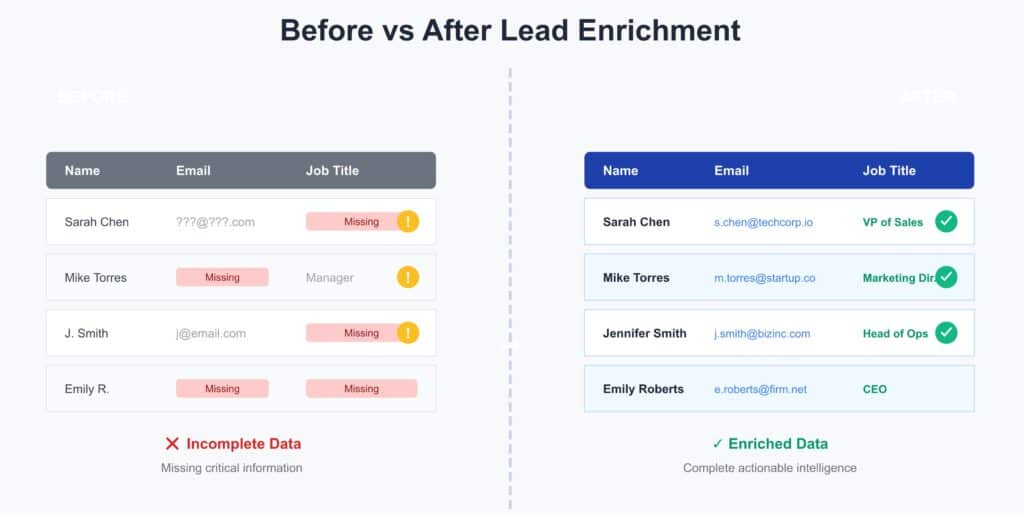
Think about it: how many leads in your CRM are missing key details?
How many hours have your sales reps wasted chasing incomplete or outdated contacts?
By learning what lead enrichment is and how to enrich lead data the right way, you can fix that fast.
Enrichment gives your team the context they need to personalize every message, focus on high-value leads, and boost conversion rates with less effort.
In this guide, you’ll learn:
- What is Lead Enrichment?
- Why Lead Enrichment Matters for Sales and Marketing
- Types of Lead Data to Enrich
- How Lead Enrichment Works: Step-by-Step Process
- Top Lead Enrichment Tools
Let’s dive in and transform your raw lead data into actionable intelligence.
What is Lead Enrichment?
Lead enrichment is the process of adding valuable, comprehensive data to existing lead records.
It transforms minimal contact information into a detailed profile.
Imagine receiving only an email address. Enrichment adds company name, job title, industry, and more.

This process typically involves leveraging third-party data sources and sophisticated tools to append missing attributes.
Why Lead Enrichment Matters for Sales and Marketing
Lead enrichment is important for keeping your lead data up-to-date and improving lead quality by providing more context about potential clients.
This information allows sales teams to prioritize high-value leads and craft targeted sales messages.
This results in:
- Increased sales efficiency
- Better lead scoring
- Improved personalization
- Optimized marketing campaigns
- Higher engagement and conversion rates
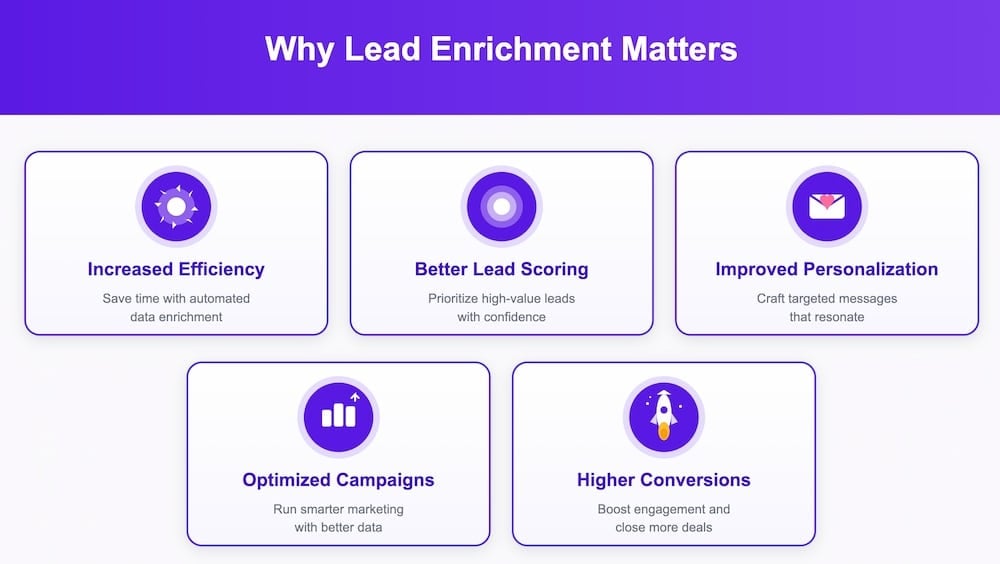
These factors contribute significantly to sales and marketing efforts. They ensure that the right message reaches the right person at the right time.
Types of Lead Data to Enrich
Enriching lead data involves gathering diverse data types. Each type plays a crucial role in understanding potential clients. By focusing on different data categories, you can gain a comprehensive view.
Here are key types to consider:
- Demographic Data
- Firmographic Data
- Technographic Data
- Behavioral Data
- Social Media Data
1. Demographic Data
This data describes the individual lead.
- Examples: Name, job title, seniority level, location, education, interests.
- Purpose: Helps personalize outreach at an individual level.
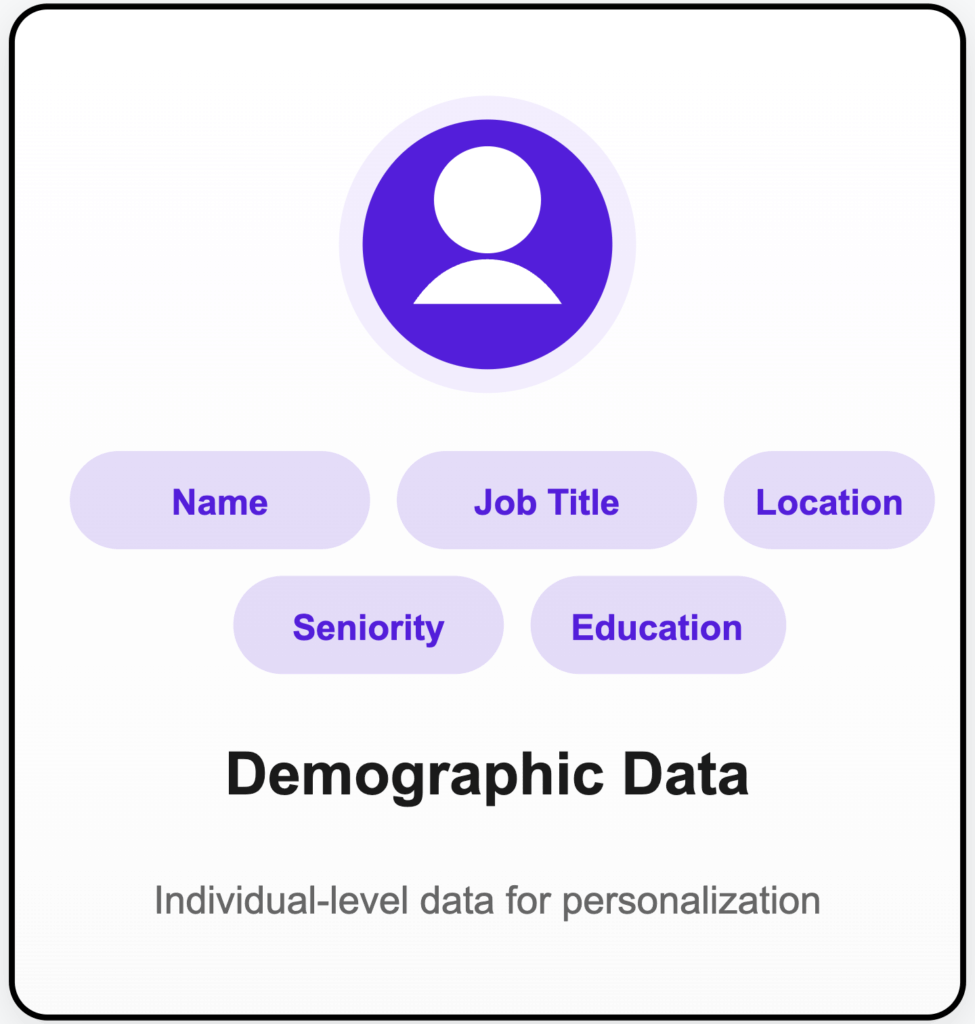
2. Firmographic Data
This data describes the company the lead works for.
- Examples: Industry, company size (employees, revenue), location, public/private status, years in business.
- Purpose: Essential for B2B sales to understand the organizational context.

3. Technographic Data
This data reveals the technology stack a company uses.
- Examples: CRM system, marketing automation platform, e-commerce platform, accounting software.
- Purpose: Identifies compatibility with your product or services and potential integration points.
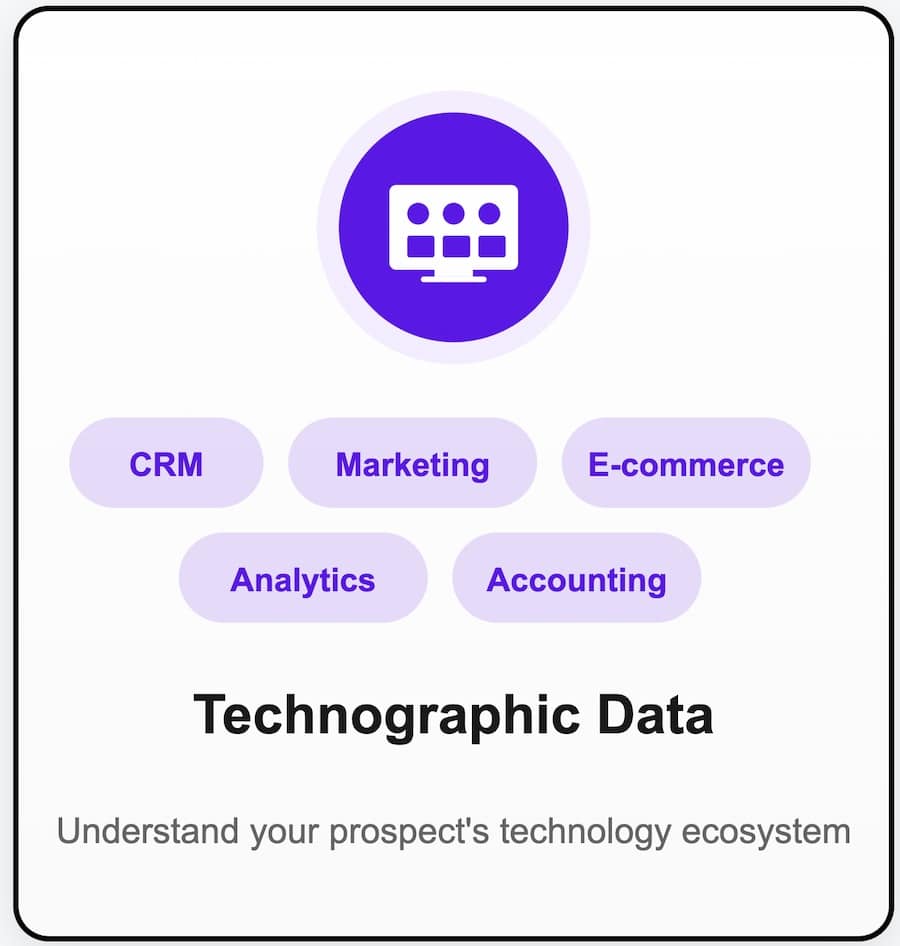
4. Behavioral Data
This data tracks how a lead interacts with your business and online content.
- Examples: Website visits, email opens, content downloads, product usage, social media engagement.
- Purpose: Indicates intent and interest, guiding follow-up actions.
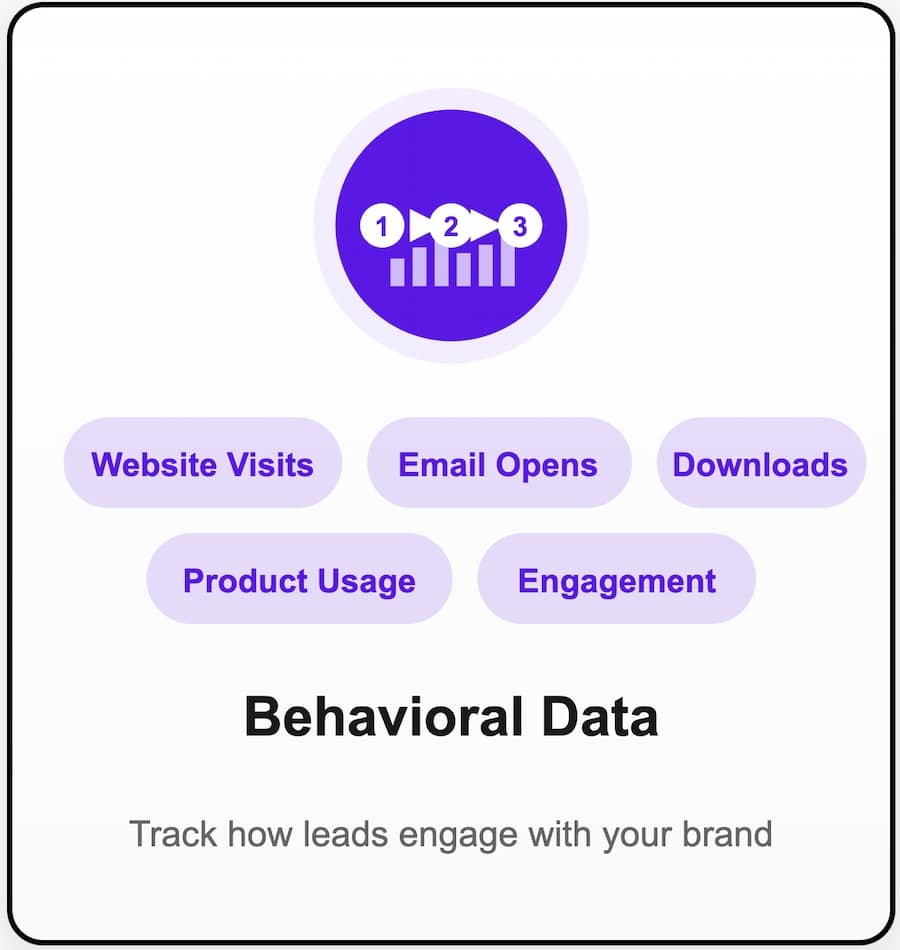
5. Social Media Data
This data provides insights from public social media profiles.
- Examples: LinkedIn profile, Twitter activity, connections, shared content, professional endorsements.
- Purpose: Offers a broader perspective on the individual’s professional persona and interests.
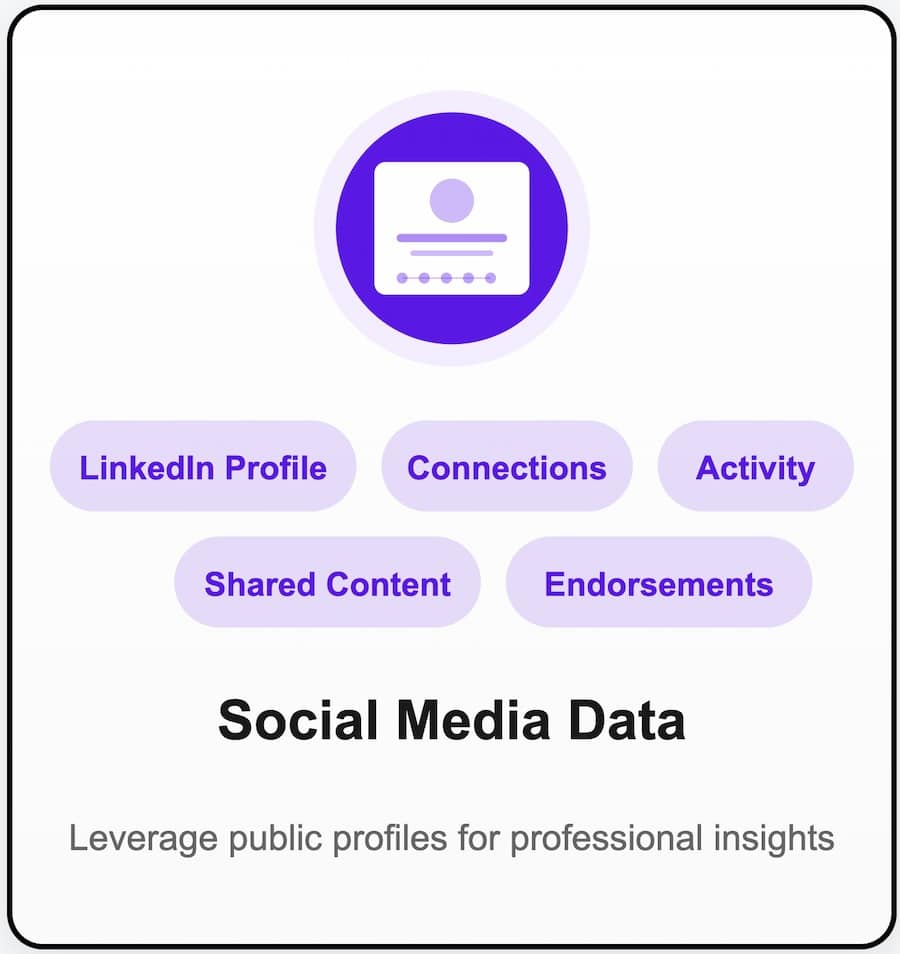
How Lead Enrichment Works: Step-by-Step Process
Lead enrichment follows a systematic process, leveraging technology to transform raw data into actionable intelligence.
Understand these steps to implement it successfully:
- Data Collection
- Data Cleansing and Validation
- Data Augmentation
- Data Integration
- Regular Enrichment
1. Data Collection
The process begins with your initial lead data, however minimal. This could be an email address, a name, or a company URL.
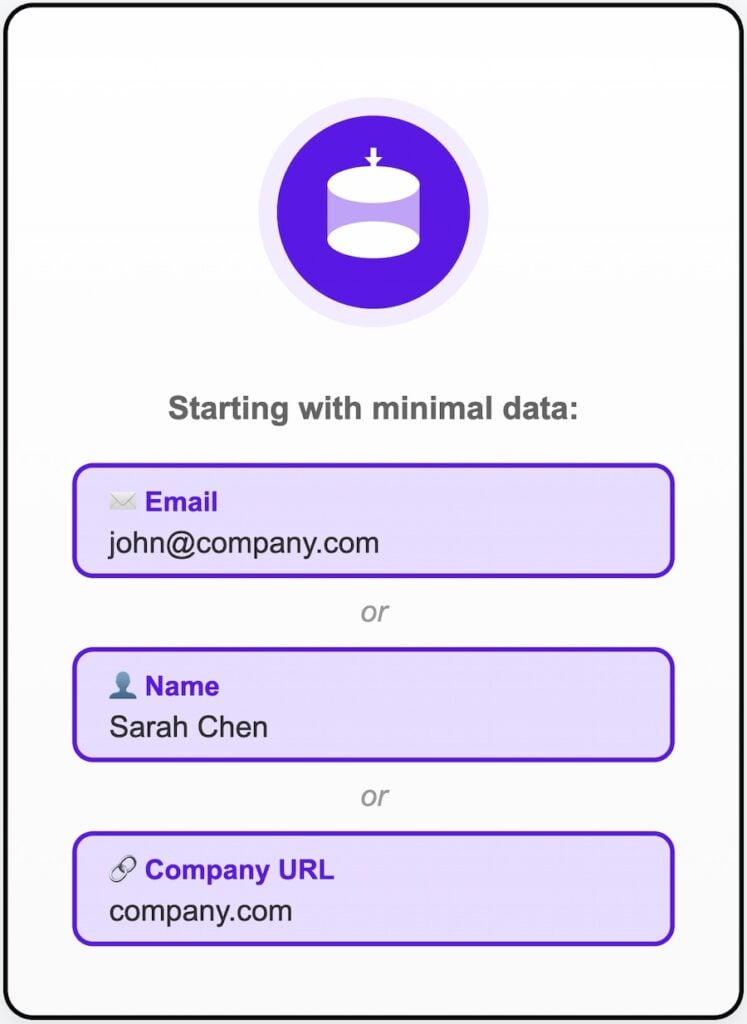
With Evaboot, you can export leads from LinkedIn Sales Navigator and automatically collect those initial core data points. This provides the foundation for layering richer intelligence.
2. Data Cleansing and Validation
Before you append new data, you must ensure your current data is accurate.
This means removing duplicates, standardising formats, validating email addresses and checking that company names match reality.
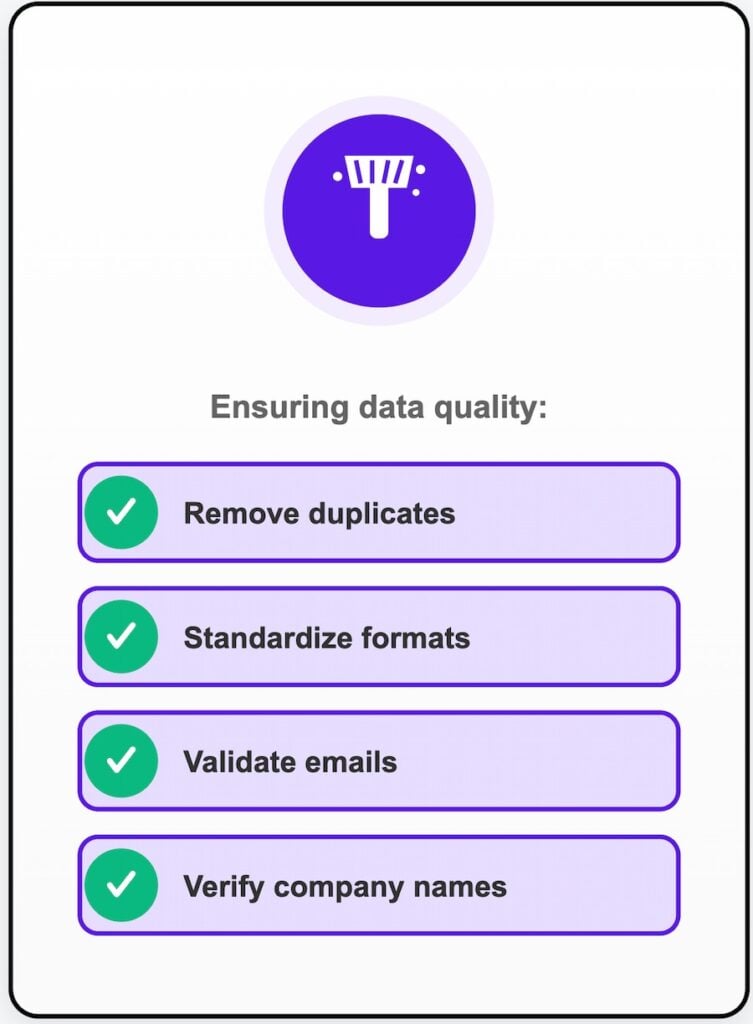
Clean data ensures your enrichment engine isn’t building on shaky foundations.
3. Data Augmentation
This is the core of enrichment. Enrichment tools connect to vast databases.
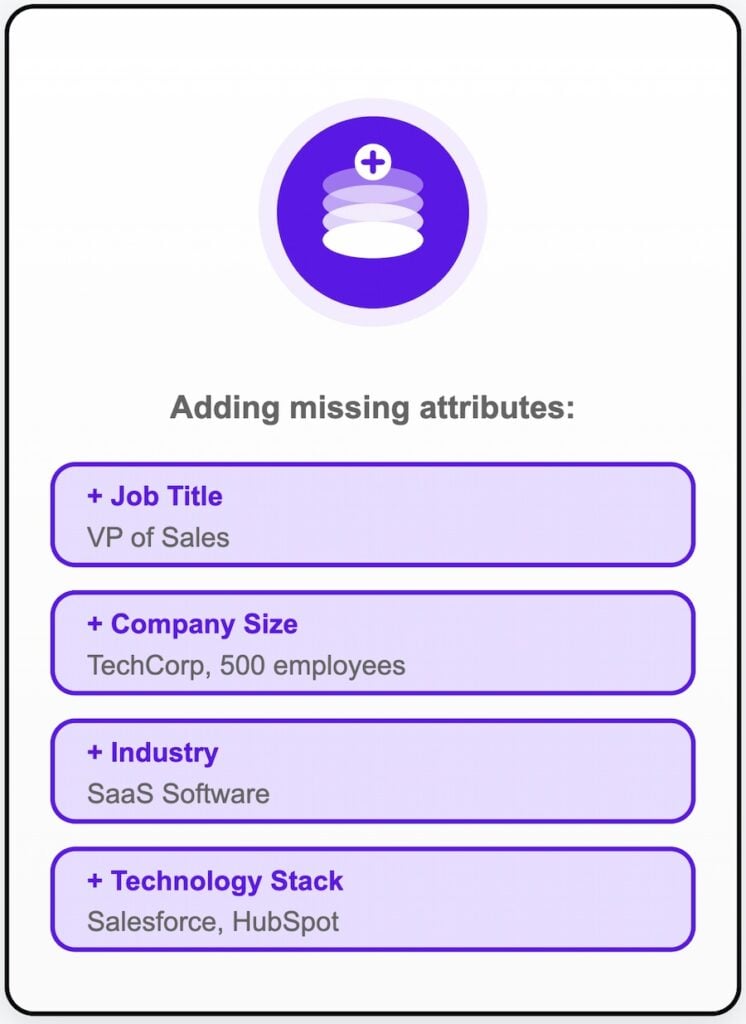
They use the clean, validated data as a lookup key. Append missing data points from external sources, such as company size, industry, job title, technology stack, and social media profiles.
4. Data Integration
Enrichment only pays off if it’s accessible.
That means feeding the enriched profiles into your CRM, marketing automation tool or outreach system — and ensuring your team can act on them.

Integration is the bridge from insight to action.
5. Regular Enrichment
Lead data should be enriched every 3 to 6 months to keep your database accurate and reliable.
In B2B, data doesn’t stay fresh for long — it decays at an average rate of 2.1% per month. That means roughly one out of five leads becomes outdated within a year.
Job titles change, people move companies, and email addresses stop working.

By regularly enriching your leads, you ensure your contact lists stay up to date, your outreach remains relevant, and your sales team never wastes time chasing dead data.
Top Lead Enrichment Tools
Several robust tools facilitate effective lead enrichment.
Evaluate the following options based on your specific requirements and existing tech stack:
- Evaboot
- Clearbit
- ZoomInfo
- Apollo.io
- Hunter.io
1. Evaboot
Evaboot is a LinkedIn Sales Navigator data scraper designed to help you build clean, compliant, and ready-to-use lead lists.
It simplifies the enrichment process through two main solutions:
1. Bulk LinkedIn URL Enrichment Feature
This feature allows you to enrich LinkedIn and Sales Navigator contacts by uploading LinkedIn profile or company unique ID URLs (or Sales Navigator URLs), and automatically retrieve detailed, verified data.
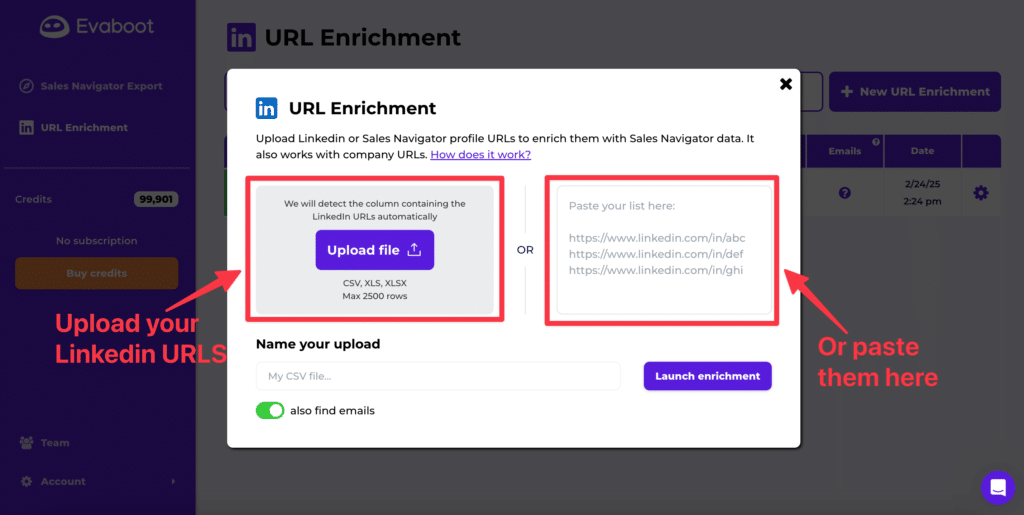
In just a few clicks, you can transform a list of LinkedIn URLs into an enriched dataset containing:
- Verified professional email addresses
- Job title and job description
- Company name, size, industry, location, and website
- LinkedIn company and profile URLs
- Indicators like “safe” vs. “risky” emails based on bounce likelihood
The process is simple:
- Import up to 2,500 Sales Navigator or LinkedIn unique ID URLs* (CSV, XLS, or XLSX).
- Launch the enrichment directly from your Evaboot dashboard.
- Export a clean, ready-to-use CSV with all enriched details.
*The URL Enrichment feature does not accept public LinkedIn URLs.
This feature ensures GDPR-compliant, accurate, and actionable lead data that can be imported directly into your CRM or used for personalized outreach campaigns.
2. LinkedIn URL Enrichment API
For teams that want to automate enrichment at scale, Evaboot also offers a LinkedIn URL Enrichment API.
It lets you connect Evaboot’s enrichment engine directly to your internal systems — perfect for syncing large datasets or automating contact updates without manual uploads.
Here’s how to use it:
With this API, your workflows stay up-to-date in real time, ensuring your CRM and outreach tools always reflect the most accurate LinkedIn and company information.
2. Clearbit
Clearbit specializes in real-time data enrichment and integrates seamlessly with CRMs and marketing automation tools like HubSpot, Salesforce, and Marketo.
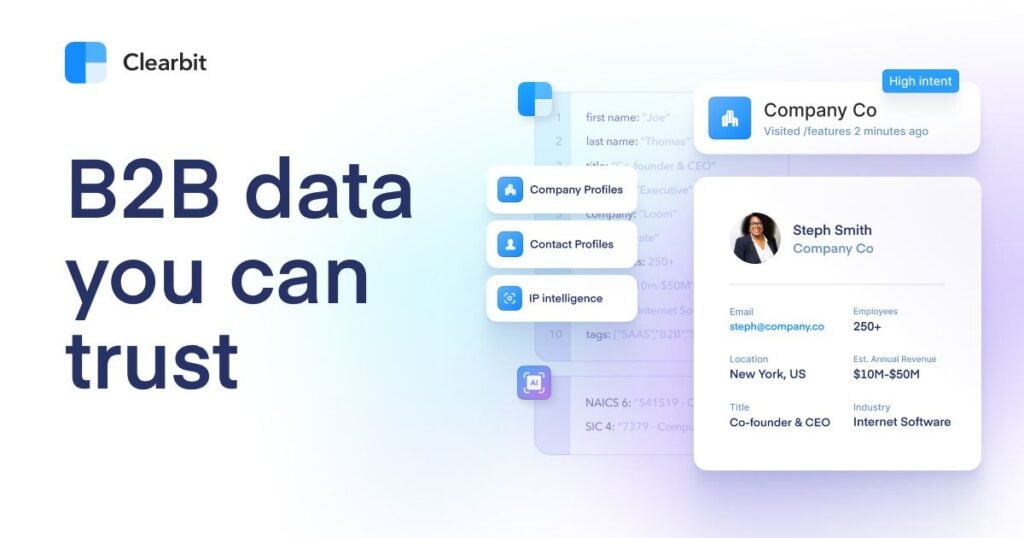
It provides extensive firmographic, demographic, and technographic data — including company size, revenue, industry, and technology stack — helping teams better segment audiences and personalize outreach at scale.
3. ZoomInfo
ZoomInfo is a go-to-market intelligence platform that offers one of the most comprehensive B2B databases on the market.
It delivers accurate contact details, buying intent signals, and organizational insights, enabling sales teams to identify decision-makers, track company updates, and tailor their messaging accordingly.
4. Apollo.io
Apollo.io combines lead enrichment, prospecting, and engagement features into a single platform.
It provides a large database of verified B2B contacts and company data, allowing users to enrich existing leads or discover new prospects.
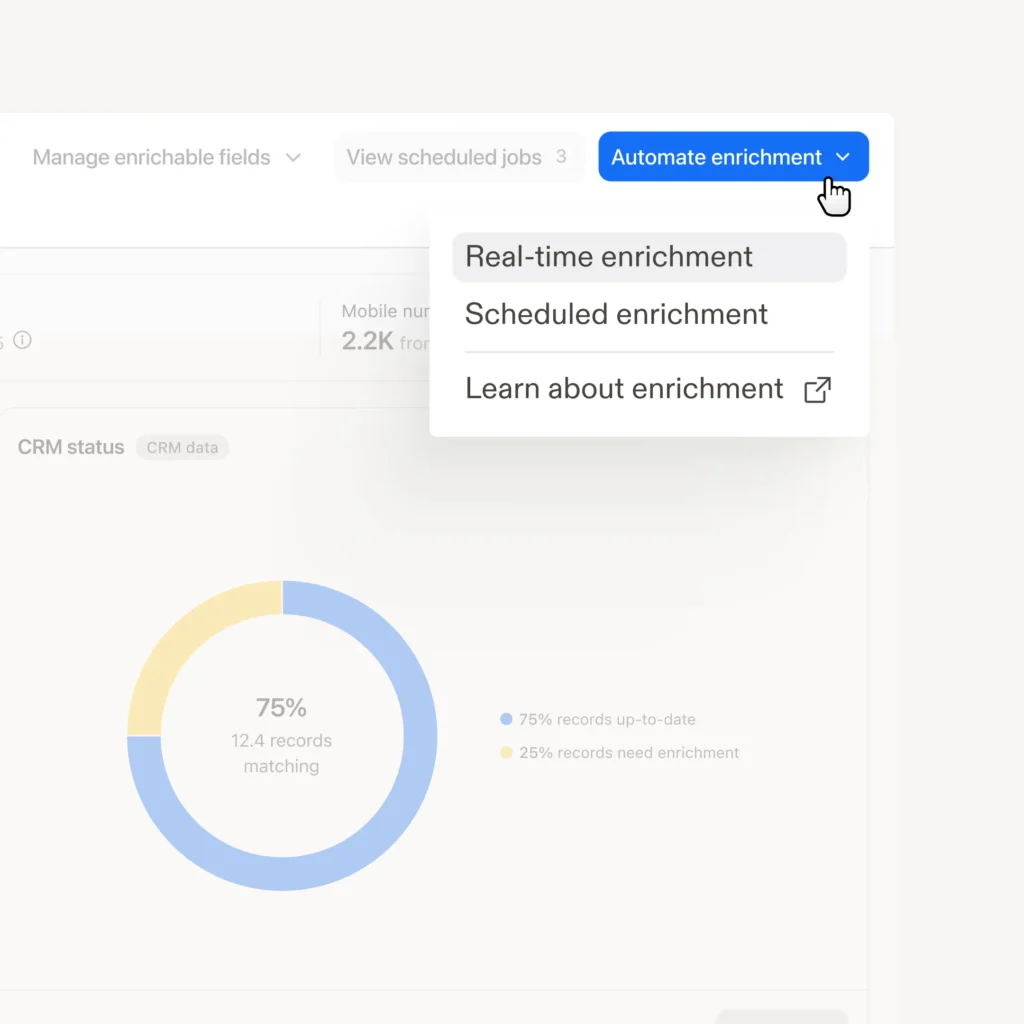
Apollo also includes built-in email sequencing and CRM integration, making it an excellent choice for outbound sales teams.
5. Hunter.io
Hunter.io is best known for its email finder and verifier tools.
It helps users discover professional email addresses associated with a specific domain and validate them in bulk.

Hunter’s domain search and API features make it a practical option for small teams looking to quickly verify or enrich contact lists with basic company details.
Conclusion
Lead enrichment is what turns disconnected data into real sales opportunities.
By transforming basic contact details into complete, accurate profiles, your team can finally focus on leads that matter.
When you enrich lead data regularly, you improve targeting, personalize outreach, and boost conversion rates with less effort.
With tools like Evaboot, you can automate this process from start to finish — exporting leads from Sales Navigator, enriching them with verified details, and syncing everything into your CRM.
Ready to start enriching your leads today and turn raw data into revenue?
FAQs
What is the purpose of lead enrichment?
The purpose of lead enrichment is to enhance incomplete lead data with additional, valuable information from various sources.
This provides a more complete and accurate profile of your prospective customers, enabling better personalization, lead scoring, and targeted outreach.
How does lead enrichment improve sales?
Lead enrichment improves sales by equipping sales teams with comprehensive insights into their prospects.
This allows for more personalized conversations, tailored pitches, reduced research time, and better prioritization of high-value leads, ultimately leading to higher conversion rates and increased efficiency.
What kind of data is used in lead enrichment?
Lead enrichment utilizes various types of data, including:
• Demographic data (individual attributes)
• Firmographic data (company attributes)
• Technographic data (technology stack)
• behavioral data (interactions with your business)
• Social media data (public social profiles)
Is lead enrichment suitable for all businesses?
Yes, lead enrichment is suitable for nearly all businesses, particularly those engaged in B2B sales or any organization that relies on understanding its customer base deeply.
While the scale and specific data types may vary, the core benefit of better customer understanding applies universally.
How often should lead data be enriched?
Lead data decays fast and should be enriched every 3-6 months to maintain accuracy.


![How To Use LinkedIn Boolean Search? ([year] Guide) 35 linkedin boolean search tutorial](https://evaboot.com/wp-content/uploads/2022/11/linkedin-boolean-search-tutorial-768x432.png)

![LinkedIn Open Profiles: Meaning And How To Find Them? ([year]) 37 how to search for open profiles on linkedin](https://evaboot.com/wp-content/uploads/2022/09/How-To-Search-For-Open-Profiles-on-Linkedin-768x432.jpg)

![How to Generate Leads on LinkedIn in [year]: 29+ Proven Strategies 39 linkedin lead generation tutorial](https://evaboot.com/wp-content/uploads/2024/12/Linkedin-Lead-Generation-Tutorial-768x432.jpg)
![How to Find Someone's Email on LinkedIn in [year] 40 find linkedin email](https://evaboot.com/wp-content/uploads/2025/01/FIND-LINKEDIN-EMAIL-768x432.png)